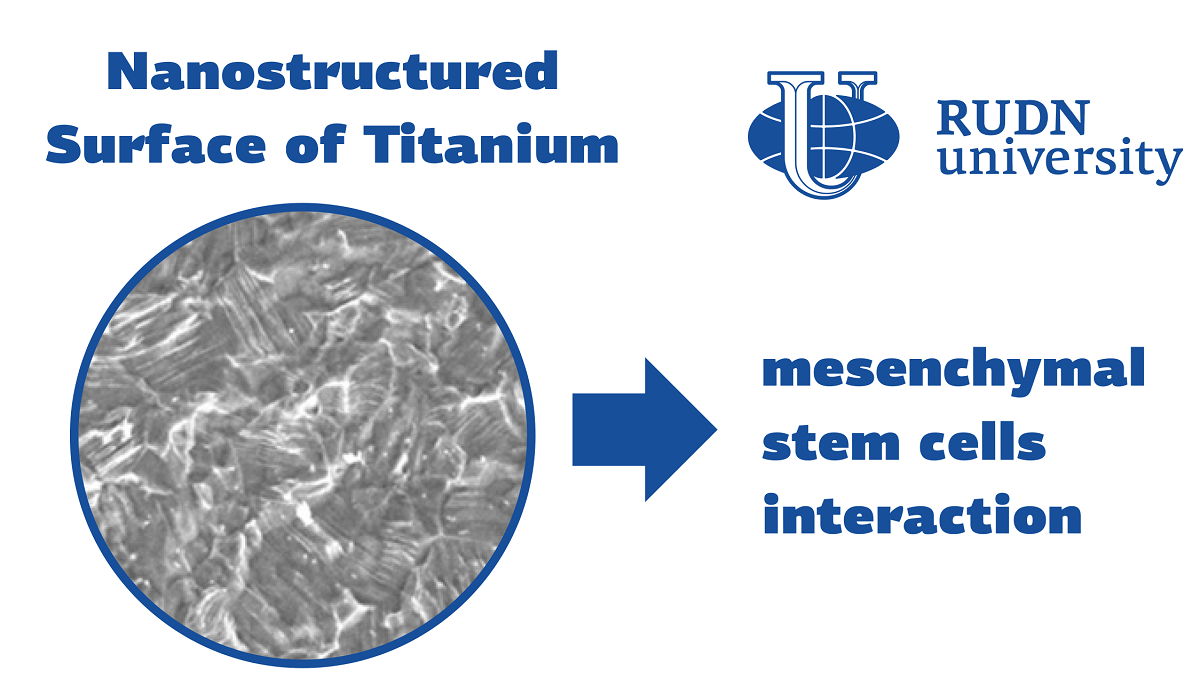RUDN scientists have improved titanium dental implants with graphene nanosloyers

Titanium is used to create dental implants. It is resistant to corrosion, is not dangerous to tissues, does not interact with the tissues of the body. To improve osseointengrania (contact between the implant and thetooth), cells are “deposited” on the titanium surface — fibroblasts, osteoblasts, chondrocytes and stem cells(mesenchymal stromal cells),which can differentiate (transform) into cartilage and bone tissues. Scientists continue to develop new ways of treating the surface of titanium that would improve its interaction with these cells.
"Toachieve good osseointegration, it is necessary to use osteogenicande cells, forexample, osteoblasts and mesenchymal stromal cells. Thefirst stage of the interaction of cells and implants is toflight adhesion ("adhesion").It has been proven that the quality of adhesion is crucial for the ability of cells to reproduce and differentiate. And the differentiation of mesenchymalx stromalx cellscan depend on the surfaceof titanium,”- Candidate of Physical and Mathematical Sciences Ekaterina Gosteva, Associate Professor of the Basic Department of Nanotechnology and Microsystem Engineering of RUDN University.
A group of physicists, biologists and physicians of RUDN University for the first time proposed to modify the surface of titanium with graphene, and also considered other options — etching and anodizing. The first method is a chemical effect on titanium. The second is the creation of an oxide film on the surface of the metal using physical or electrochemical action. The graphene layers on titanium were created by deposition fromthe gas phase — a titanium substrate is placed in a gas that interactswith the metal produces the right compound on thesurface. The researchers tried different options for preparing titanium, and then grew stem cell cultures on itto find the most effective way.
The most pronounced structure of the titanium surface was in the sample, which was treated in a combined way — first etched in a mixture of hydrochloric and sulfuric acids, and then anodized. From the point of view of cell adhesion, the most effective was a sample with a graphene coating — it was created using ethanol, at a temperature of 950 ° C for 35 minutes.
“Anodizing and graphene coated with 50% ethanol content with a deposition temperature of 950 °C and 35 minutes of synthesis are more favorable for cell adhesion, reproduction and further differentiation compared to other samples. These results are an importantstage in the development of titanium implants for preclinical studies,” Candidate of Medical Sciences Alexander Dymnikov, Associate Professor of the Department of Maxillofacial Surgery, RUDN University.
RUDN summarized the results of the scientific competition "Project Start: work of the science club ". Students of the Faculty of Physics, Mathematics and Natural Sciences have created a project for a managed queuing system using a neural network to redistribute resources between 5G segments. How to increase flexibility, make the network fast and inexpensive and reach more users — tell Gebrial Ibram Esam Zekri ("Fundamental Computer Science and Information Technology", Master's degree, II course) and Ksenia Leontieva ("Applied Mathematics and Computer Science", Master's degree, I course).
The National Demographic Report, 2023 Demographic Well-Being of Russian Regions (hereinafter - the National Demographic Report) was prepared by the scientific team of the Institute of Demographic Studies of the Federal Research Center of the Russian Academy of Sciences, the Vologda Scientific Center of the Russian Academy of Sciences, Peoples' Friendship University of Russia, the Center for Family and Demography of the Academy of Sciences of the Republic of Tatarstan, as well as with the participation of leading scientists from the Republic of Bashkortostan, Stavropol Krai, Volgograd, Ivanovo, Kaliningrad, Nizhny Novgorod, Sverdlovsk Oblasts and Khanty-Mansi Autonomous Okrug–Yugra.
RUDN summarized the results of the scientific competition "Project Start: work of the science club ". Students of the Faculty of Physics, Mathematics and Natural Sciences have created a project for a managed queuing system using a neural network to redistribute resources between 5G segments. How to increase flexibility, make the network fast and inexpensive and reach more users — tell Gebrial Ibram Esam Zekri ("Fundamental Computer Science and Information Technology", Master's degree, II course) and Ksenia Leontieva ("Applied Mathematics and Computer Science", Master's degree, I course).
What is your first association with the word “laboratory”? Flasks and beakers? Microscopes and centrifuges? Yes, many of us would answer the same way.
The National Demographic Report, 2023 Demographic Well-Being of Russian Regions (hereinafter - the National Demographic Report) was prepared by the scientific team of the Institute of Demographic Studies of the Federal Research Center of the Russian Academy of Sciences, the Vologda Scientific Center of the Russian Academy of Sciences, Peoples' Friendship University of Russia, the Center for Family and Demography of the Academy of Sciences of the Republic of Tatarstan, as well as with the participation of leading scientists from the Republic of Bashkortostan, Stavropol Krai, Volgograd, Ivanovo, Kaliningrad, Nizhny Novgorod, Sverdlovsk Oblasts and Khanty-Mansi Autonomous Okrug–Yugra.